A third of our packaging is made by specific designed, manufactured and assembled custom work. We have the production facilities, materials and resources available to achieve customized work, even by piece, as well as for large series of products. Often it is an adaptation or addition to a standard product from our assortment, but also completely new products are being developed.
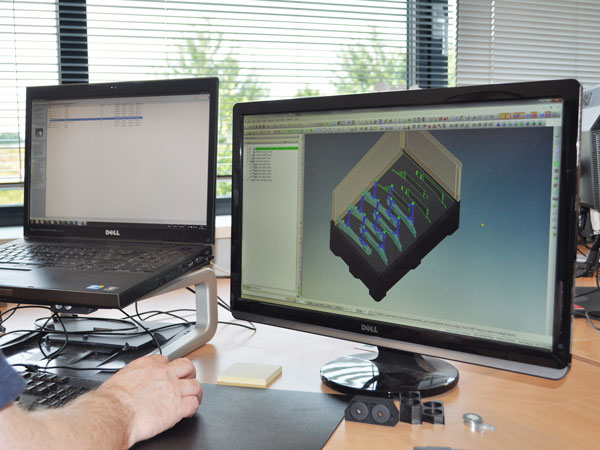
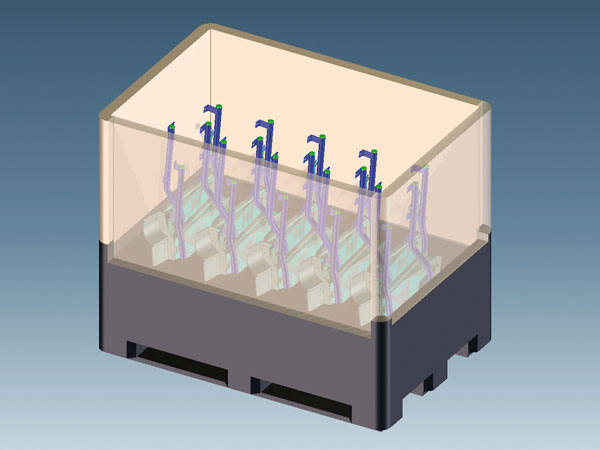
Interiors are valuable in the manufacturing industry:
- They protect the content during storage and transportation
- They standardize and organize the delivery of the products, allowing automatic manipulation
We provide custom interiors of different materials and use various production methods. Each material has its own advantages and disadvantages. Each question looks at which materials can be used best. In order to create a complete packaging solution, the interiors are often used in combination with our bins and pallet boxes. Also available in ESD safe material.
Each material has its own advantages and disadvantages.
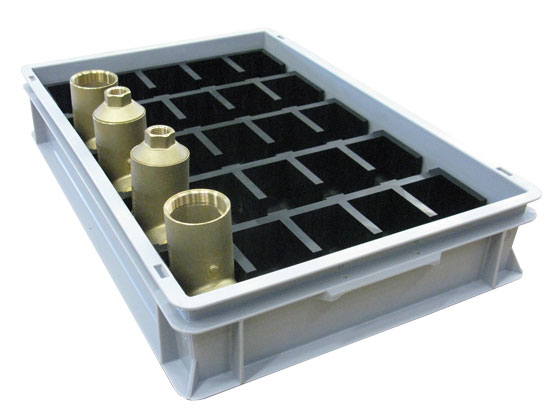
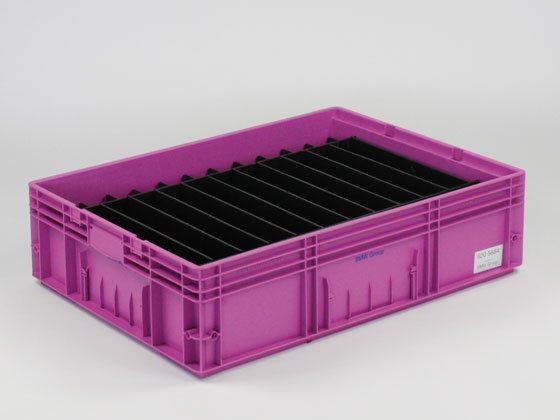
Cellular sheets
Plastic cellular sheet (aka corrugated sheet) material can be shaped like corrugated cardboard. It is an extremely light and strong sheet material, available in different thicknesses, strengths and colors. For heavier applications and solutions where high accuracy is a required, we manufacture solid-plastic product carriers. These plastic parts are grind-sized and optionally fitted with inserts on which parts can be safely secured during transport. We assemble these product carriers on plastic pallets, bins or steel frames.
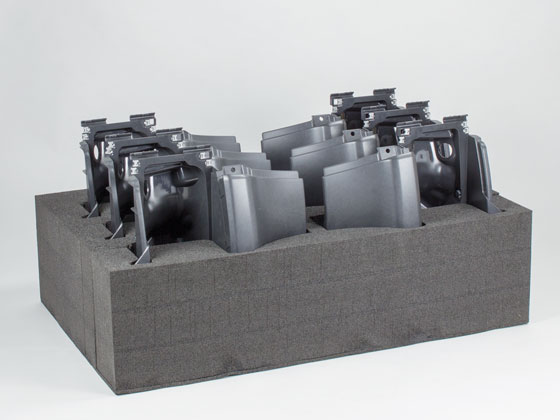
Foam interiors
There are several ways to pack vulnerable parts in foam. We have standard punched foam blocks, which make it easy to assemble a suitable interior.
In addition, we make custom interiors, based on supplied 3D models of the product to be packaged. If this is not available, the interior will be customized using a supplied model.
For the manufacturing of foam interiors in small to medium-sized series we use techniques such as punching, water jet cutting, milling or contour cutting. It depends of the application, which technique is the best.
For the manufacturing of interiors in larger versions we choose mold-shaped foam. A major advantage of this technique is that mold parts with a complex geometry can be realized. Examples of molded foam materials are EPP and EPS. Foam interiors fit into our standard plastic bins, but also in our cases. In addition, we make foam interiors for larger packages such as (foldable) pallet boxes. Foam is also used as part of a composition. Foam parts can be glued gently to cellular plates and used as buffers or as spacers.
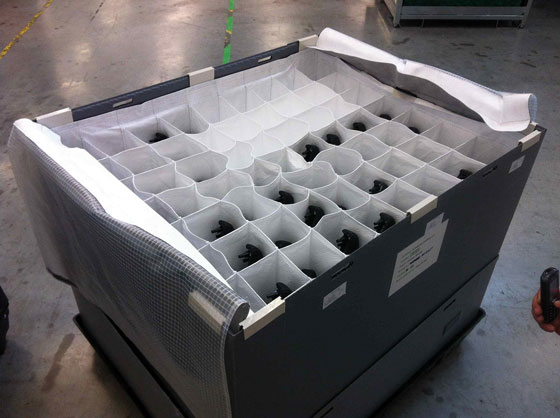
Textile interiors
Textile interiors provide optimal protection for scratch-sensitive components. A major advantage is that they are flexible and therefore very suitable for products with complicated geometry. This flexibility also offers benefits in the event of return transport of empty collapsible packaging. We offer a variety of materials, with particular reference to the scratch sensitivity of the products to be packaged. The various textile interiors we deliver in various material strengths, tailored to the product to be packaged.
It is also possible to carry textile interiors with materials such as corrugated sheet or foam. Cellular sheets can provide extra stability and foam for even better protection of the products. The textile interiors can be mounted in standard plastic bins, but also in a customized bin made of cellular sheet material. We also apply them in larger versions, such as pallet boxes, folding pallet boxes and metal racks.
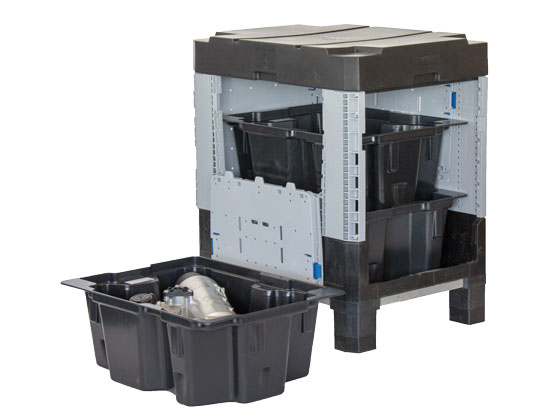
Vacuum molded trays or product carriers
Vacuum molding is a method for making a product of a plastic sheet, such as a product carrier, a lid or a bin. A bin in combination with a vacuum-molded interior forms an efficient product carrier. The bin ensures stackability, the interior positions and protects the parts to be transported. Because the forces that vacuum molds have to bear are only a fraction of the forces that have injection molds, they are also about 80% cheaper. Therefore, vacuum forms is often an interesting technique for series from 250 units. To produce tough and impact-resistant products we use polyethylene. When shape strength and precision are important.


